Ansel Adams was an American landscape photographer who lived in California, he was mostly popular for his reputation of being a ‘technical master’ of black and white photography. He used a brownie box camera with most of his popular images taken with 8×10 and 4×5 view cameras. His images were seen as minimalist, with a multitude of photos shot in black and white with a sharp contrast. Ansel’s work is known for its realist style with an unenthusiastic and inspirational approach.
A quote from his book ‘The Ansel Adams Guide- Basic Techniques of Photography‘ says:
“The photographs he created speak eloquently of the heroic nature of our mountains, the tragedies of displaced people, and the extraordinary beauty of the world.”
The American West.
Adams mostly took photos in Western landscapes. His views of Yosemite and the Sierra Nevada are most known. His photographs emphasize the natural beauty of the land and display the American West and its true beauty. The reason why Ansel moved to the west, is the constant bright and sunny weather that help to carry the beautiful views that he captured.
Connection with Group f/64 and its members.
Group f/64 was created by the photographers Ansel Adams and Willard Van Dyke who was Edward Weston’s apprentice. They chose to gather fellow photographers in order to promote a common aesthetic principle. During the 1930s, William Van Dyke created a small photography gallery in his home at (683 Brockhurst) in Oakland. The group of people consisted of:
- Ansel Adams,
- Imogen Cunningham,
- John Paul Edwards
- Preston Holder,
- Consuelo Kananga,
- Alma Lavenson,
- Sonya Noskowiak,
- Henry Swift,
- Willard Van Dyke,
- Brett Weston,
- Edward Weston.
The Zone System.
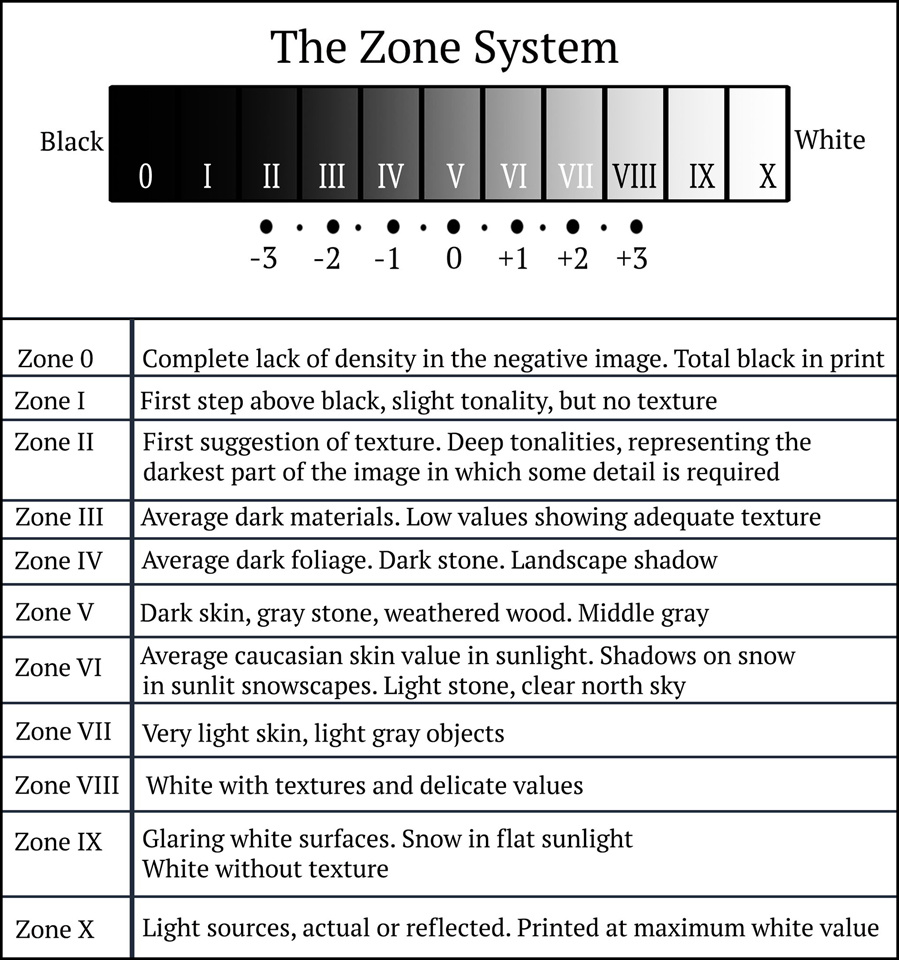
The Zone System was a combination of 11 zones in Ansel Adams system which were defined to represent ‘the gradation of all the different tonal values‘ that you would see typically in a black and white print, this would help him calculate the exposure of the image he is going to take with his camera and get a rough sense of what his whole frame will look like before he shoots To fully understand the principles behind the Zone System, he explained the necessity to appreciate the relationships between the subject brightness, film exposure, development time, negative densities and the print tones. He explained how it is obvious from an technical side of inspection from his prints that “Reducing the exposure of the film, products a darker print value“.
Ansel Adams also simplified the Zone System into 3 key parts.
- Measuring the subject brightness range
- Determining the exposure
- Developing the film for the appropriate duration.
Ansel Adams – Romanticism.
Ansel Adams helped to escalate photography as a valued art form in early 20th century America .Adams was inspired by the the ‘American value of nature’, which led to the establishment of the National and State Park systems in the U.S. He was also drawn to these painters’ romanticism, this then led him to use his techniques which increase the drama and capture his heartfelt passion through a photo. Ansel decided to embrace Romanticism through his black and white film to create breath-taking images of towering mountains, elegant lakes and snowy hills. This gave his pictures an extra effect and made his work stand out compared to other artists such as Edward Weston. The black and white effect created a look to the sky which darkened the blue tones to a more mysterious and shadowy, and blackish grey colour which continues into the mountains and hills which ties his photography into the subject of romanticised in landscape photography. Ansel Adams had a vision of what he wanted all his images to look like- this is called visualisation in the minds eye.
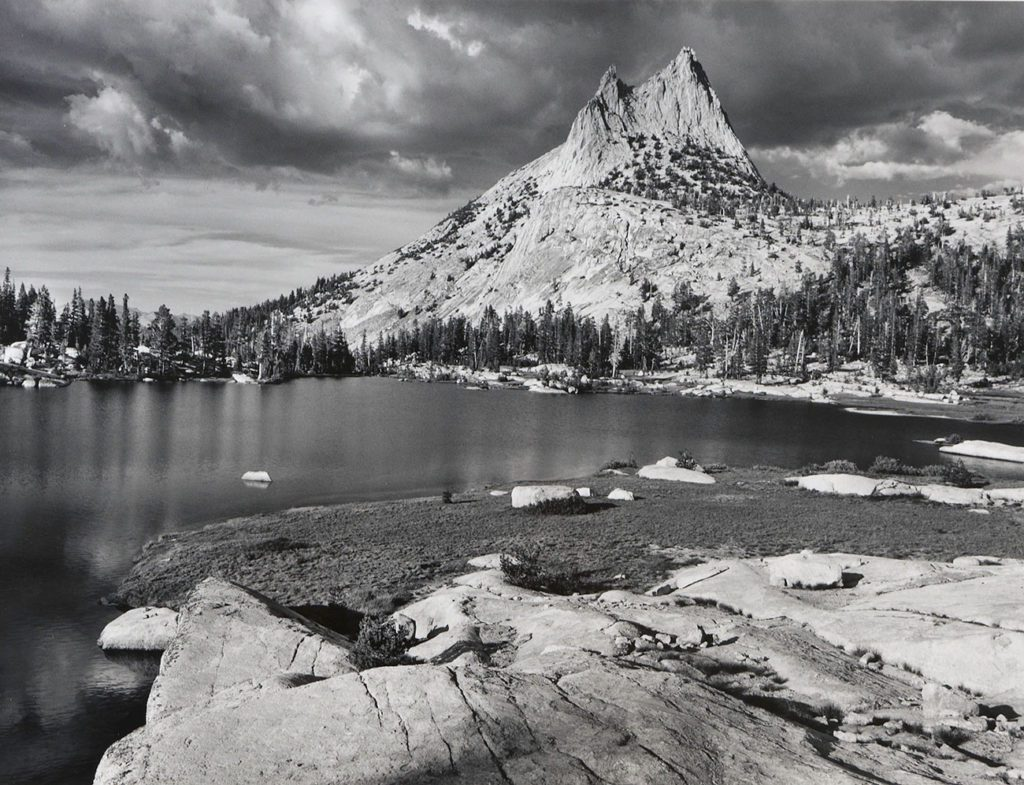
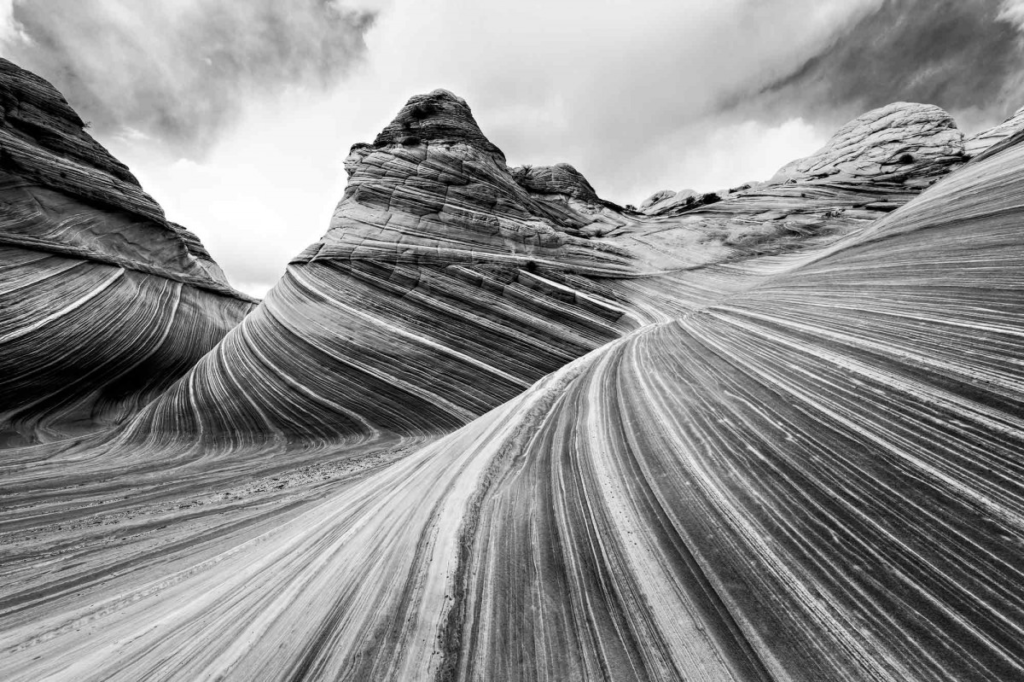
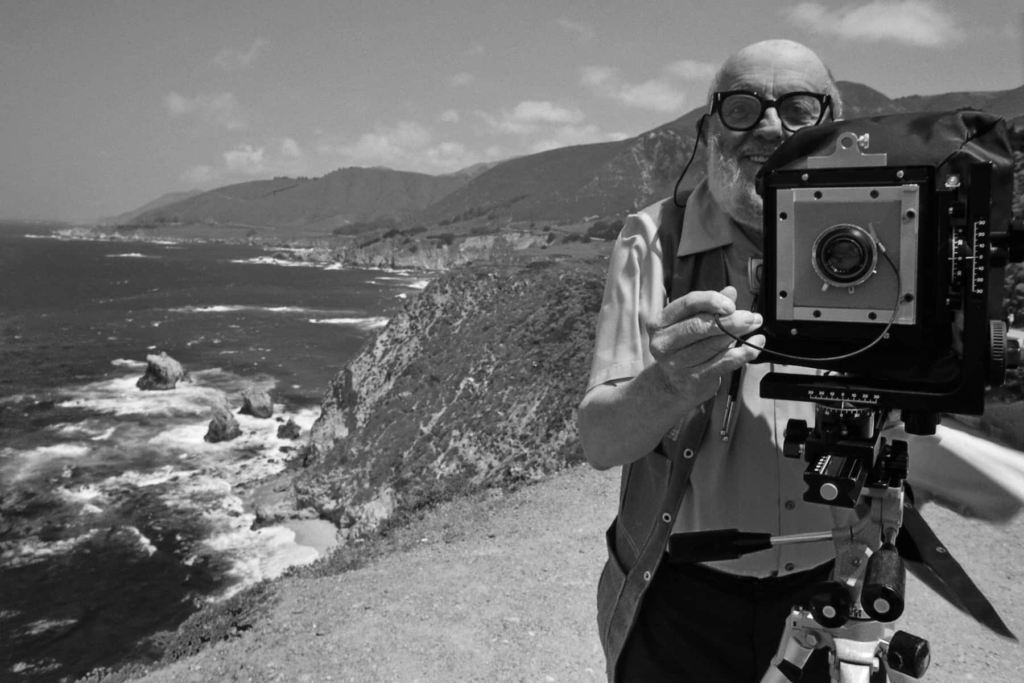
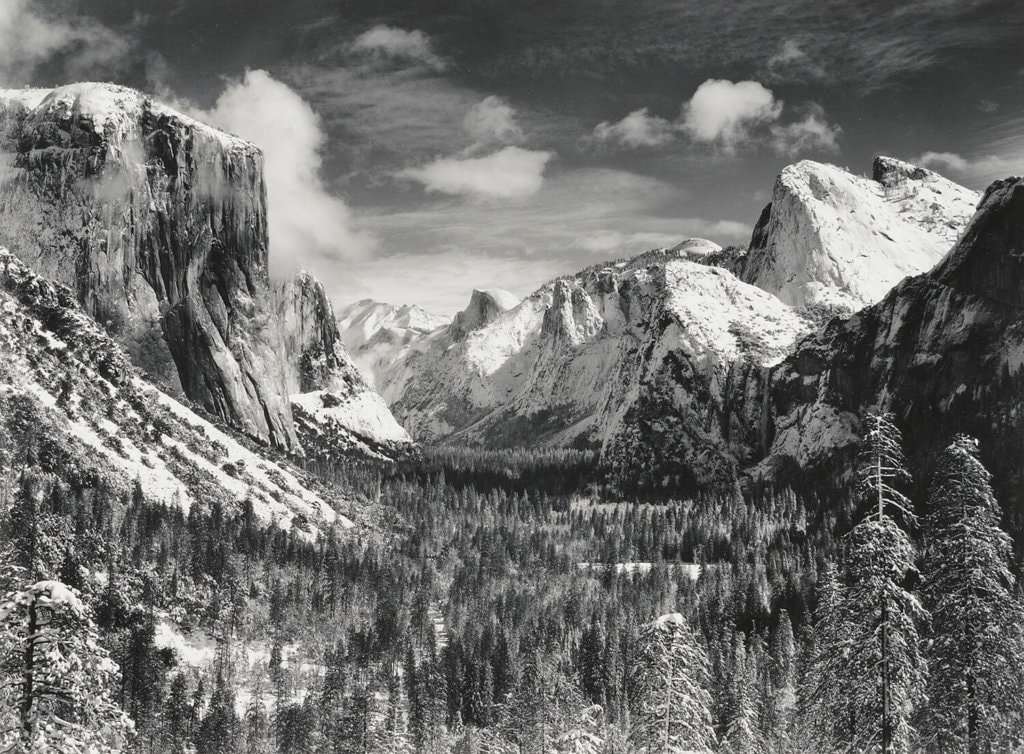
“Life is your art. An open, aware heart is your camera. A oneness with your world is your film.”
He was sometimes questioned and negatively judged for not including humans in his photographs, and instead he would represent an’ idealized’ wilderness that no longer exists in the modern world. He justified putting his images into black ad white by saying it was distracting for the viewer and diverting their attention from his miraculous achievements when taking the photograph.
MOST POPULAR IMAGE.
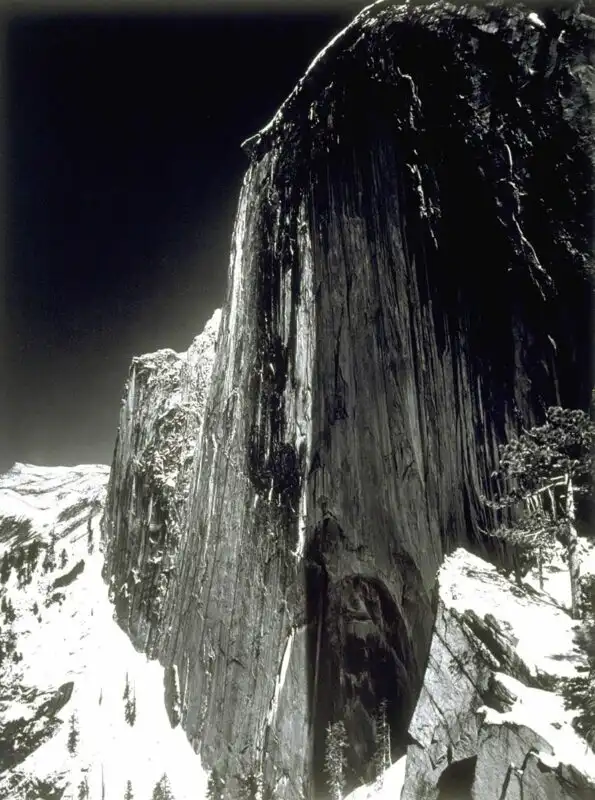
His most famous image is Monolith, the Face of Half Dome. It was taken in April of 1927. It is the Half Dome in Yosemite National Park after a difficult hike with his fiancée Virginia and two friends. He used a 6 1/2 x 8 1/2 Korona View camera, which had 2 lenses. 2 filters, a large wooden tripod and 12 ‘Wratten Panchromatic Plates’ made of glass. Whilst using his last plate, he attempted to replicate the image in his head that carries the qualities he was aware of when making the exposure.
He reduced the filter down by a factor of 16. He then pressed the shutter release for a 5-second exposure at f/22 this image perfectly represents his ‘first conscious visualisation in his minds eye.’
He explained it to be one of the most exciting moments of his photographic career as he removed the plate from the fixing bath and it revealed his beautiful negative interpretation. This was Adams’ first photograph that gathered the attention of the public and the art world.
MY FAVOURITE IMAGE.
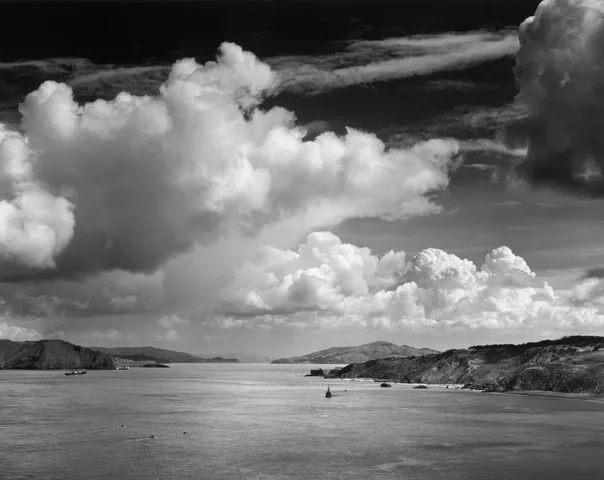
The Golden Gate Bridge. In 1932, Ansel Adams decided to capture this photograph of the Golden Gate before the bridge had been constructed. This photo is both historical and beautiful. It allows the person looking at it to have an insight as tolife before the famous bridge was created and became part of the landscape. It was taken on a morning after a previous storm and Adams said “I looked out the window of our San Francisco home and saw magnificent clouds rolling from the north over the Golden Gate. I grabbed the 8 x 10 equipment and drove to the end of 32nd Avenue at the edge of Seacliff. I dashed along the old Cliff House railroad bed for a short distance, then down to the crest of a promontory. From there a grand view of the Golden Gate commanded me to set up the heavy tripod, attach the camera and lens, and focus on the wonder evolving landscape of clouds.”
During the 1960s, The Sierra club- including Ansel Adams decided to oppose the idea of construction upon high-rise apartment building on these hills. As his act of protest, Ansel chose to place small pictures of apartment buildings on top of hills in As a protest, he pasted tiny pictures of apartment building on top of the hills in this photograph and exhibited it in a San Francisco storefront. Due to this the ‘Golden Gate National Recreation Area’ was created in 19762 and protected these beautiful headlands, thanks to the Sierra Club.
Ansel Adams Inspired Photography.
For this photoshoot, I decided to go to Greve De Lecq and photograph the beautiful rocks and water that could really relate to Ansel Adams’ locations as he often photographs mountains and water. I also visited Beauport beach and decided to photograph the beach, sand, sea and rocks from above instead of actually going onto the beach. This helped me to photograph from a more upwards angle. I feel these images had to be in black and white in order to be more similar to Ansel Adams’ work, he did this because he saw the colour as distracting for the viewer and took their focus and attention from the landscape they are actually appreciating.









Rosie, overall very thorough and focused research on Romanticism. the Sublime, Landscape genre and Ansel Adams – well done!
Now you must plan photoshoots and match your creativity in producing some stunning landscape images in response to the above.